On April 24, 1985, the first five US universities gained domains with .edu in their URLs: University of California, Berkeley, Carnegie Mellon University, Purdue University, Rice University, and University of California, Los Angeles. At first, this option was available to any educational institution in the world, but since 2001 only American universities can acquire these domains.
By May 2020, Educase, a nonprofit promoting higher education, has registered 7,537 sites with .edu in their URLs. Our article is a grain of sand in a desert, but we did not aim at describing the websites of all American universities. Our goal as a Drupal web development company is to show that Drupal is the best CMS for higher education and research facilities.
Why do we have a say in this?
We are developing the Bibliography&Citation project and staying in touch with universities, libraries, and research centers, whose websites are created on the Drupal CMS. The project is a set of modules that allows you to keep, output, export, and import bibliographic data. We want to help even more institutions. The project is a must-have for professionals working with data sources that are valuable for science and humanity.
Best CMS for higher education
Why Drupal is perfect for higher education websites
- Drupal is an open-source system, which is essential for a higher education CMS. Open source provides a rather low price of development and maintenance, regular security updates, and flexibility for millions of students and teachers around the world.
- Thanks to the multisite functionality, developers can build a “solar system” of sites around a core website. Very often, an educational institution's structure is complex and includes schools, colleges, libraries, sports teams, etc., which can have their own websites. If these sites use the same modules, you can have a joint code base for all of them.
- You don’t have to be a developer to administer Drupal websites. The basic functionality is easily accessible; you can introduce changes by ticking checkboxes on the menu. A Drupal theme provides a layout for a website, so you don't have to code it.
- Drupal allows you to create accounts for different categories of users with different access rights to the website functionality and data. What teachers see is not available to students.
- Drupal websites are adaptive to mobile devices by default. It is important because mobile traffic has been lately prevailing over the desktop.
- Drupal supports interface localization for over a hundred languages. This allows you to develop websites for educational institutions around the world.
- Users of the website get collaboration tools. Students can work together on research with the help of the Book module.
LEARN MORE: Drupal modules for a higher education website
Now we'll have a look at some Drupal examples.
Drupal website examples
Rice University website
The University of Houston, Texas, is one of the very first institutions that registered domains with the .edu in their URLs. This website follows the common practice of higher education website development.
On the one hand, the university website serves as a catalog where its visitors, whether they are guests or applicants, get acquainted with the university, its mission, values, community, courses, entry requirements, and employment options. These sections are mentioned in the navigation panel under the hero image and are duplicated in the fixed hamburger menu so that a user always has access to them.
On the other hand, it is a landing page that leads users to subdomain websites with a news feed, university journal, calendar of events, and information on student centers. As mentioned above, a university’s website may look like a centuries-old tree. These subdomains are built partly with WordPress and other CMSs, but Drupal still prevails as a CMS for higher education.
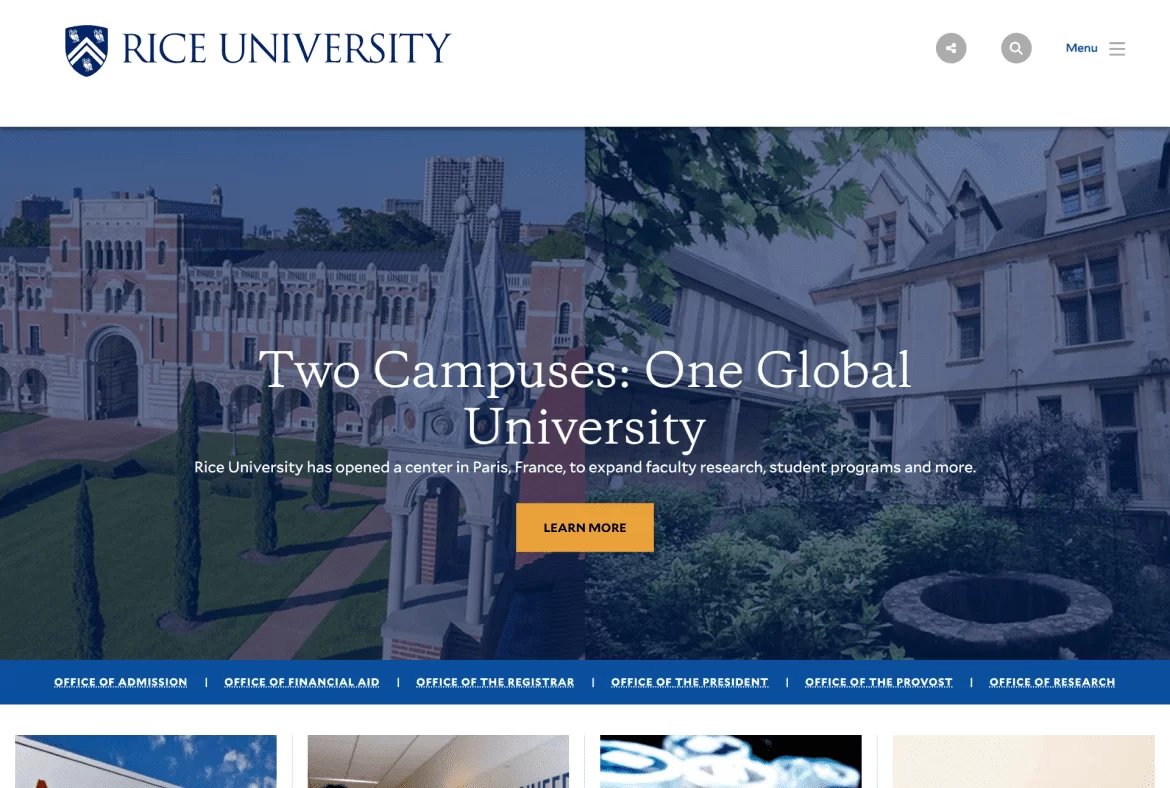
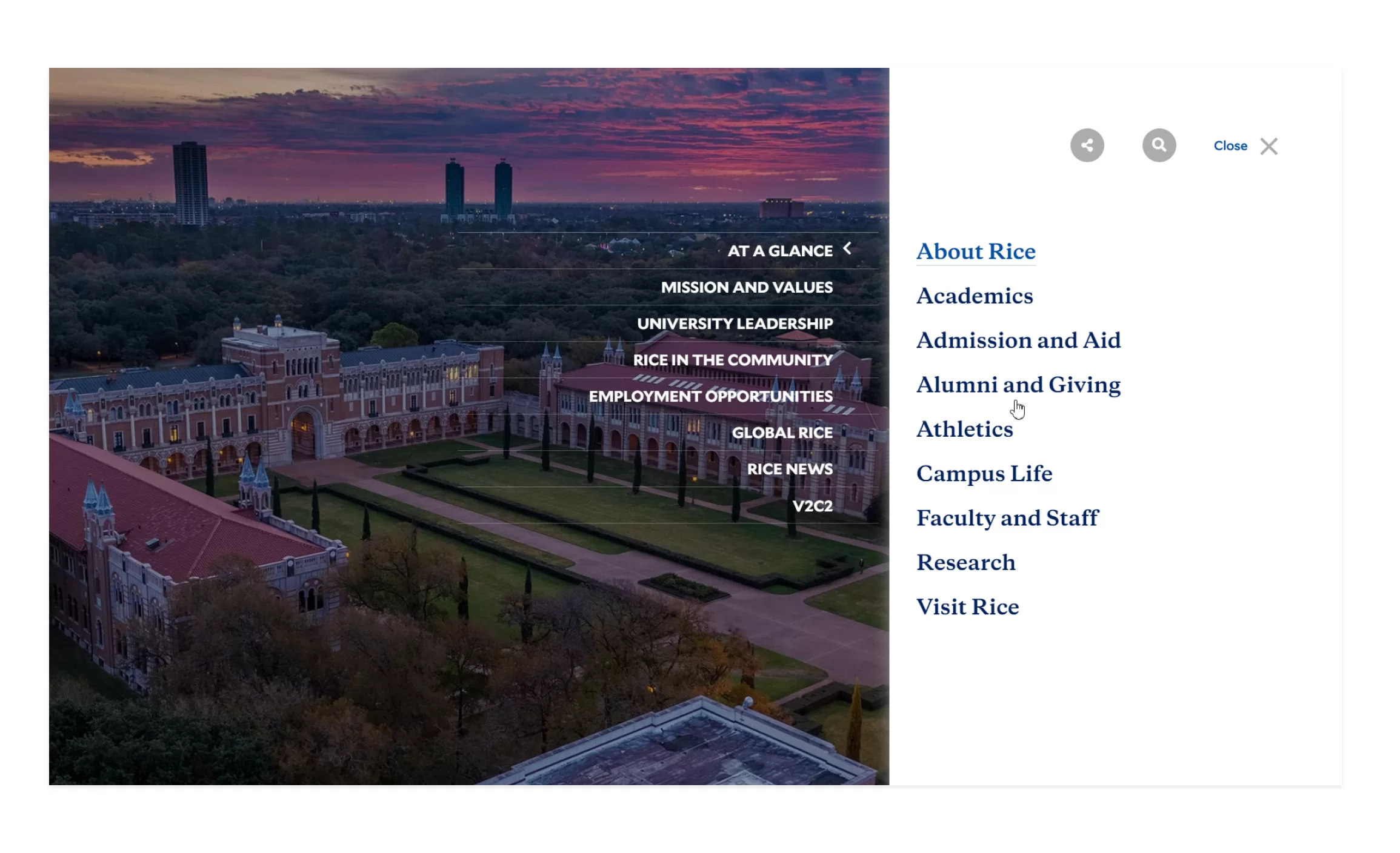
Yale University website
Along with Harvard, Princeton, and other Ivy League universities, Yale University is the dream of young and ambitious people all over the world. However, you will spot no snobbery prompted by this fact on the website pages. The home page looks like a popular science magazine, one of plenty that had become the initial impetus to education and a successful career for many of us.
University website designers are not indifferent to drop-down menus. They applied the taxonomy principle: the user receives a selection of materials from different subdomains by clicking on each menu item in The parts that make Yale whole section. Another scenario for interacting with the section is clicking the Shuffle button, which surprised us at first. The materials demonstrate how wide the University's specialization is.
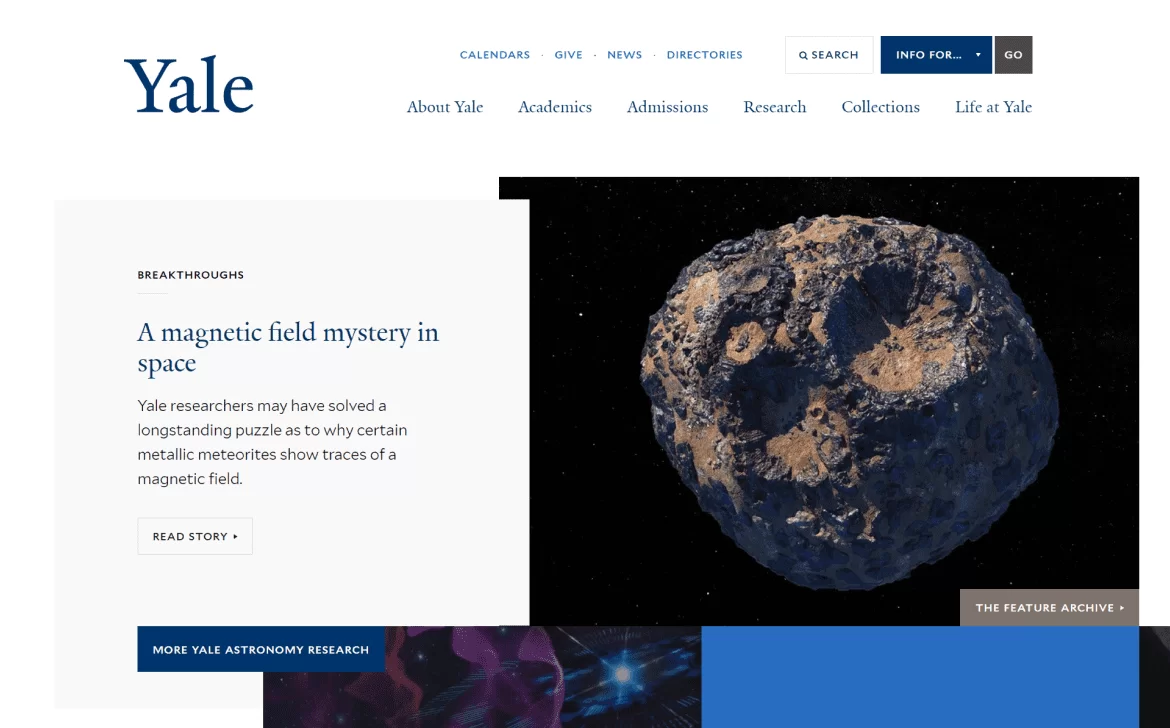
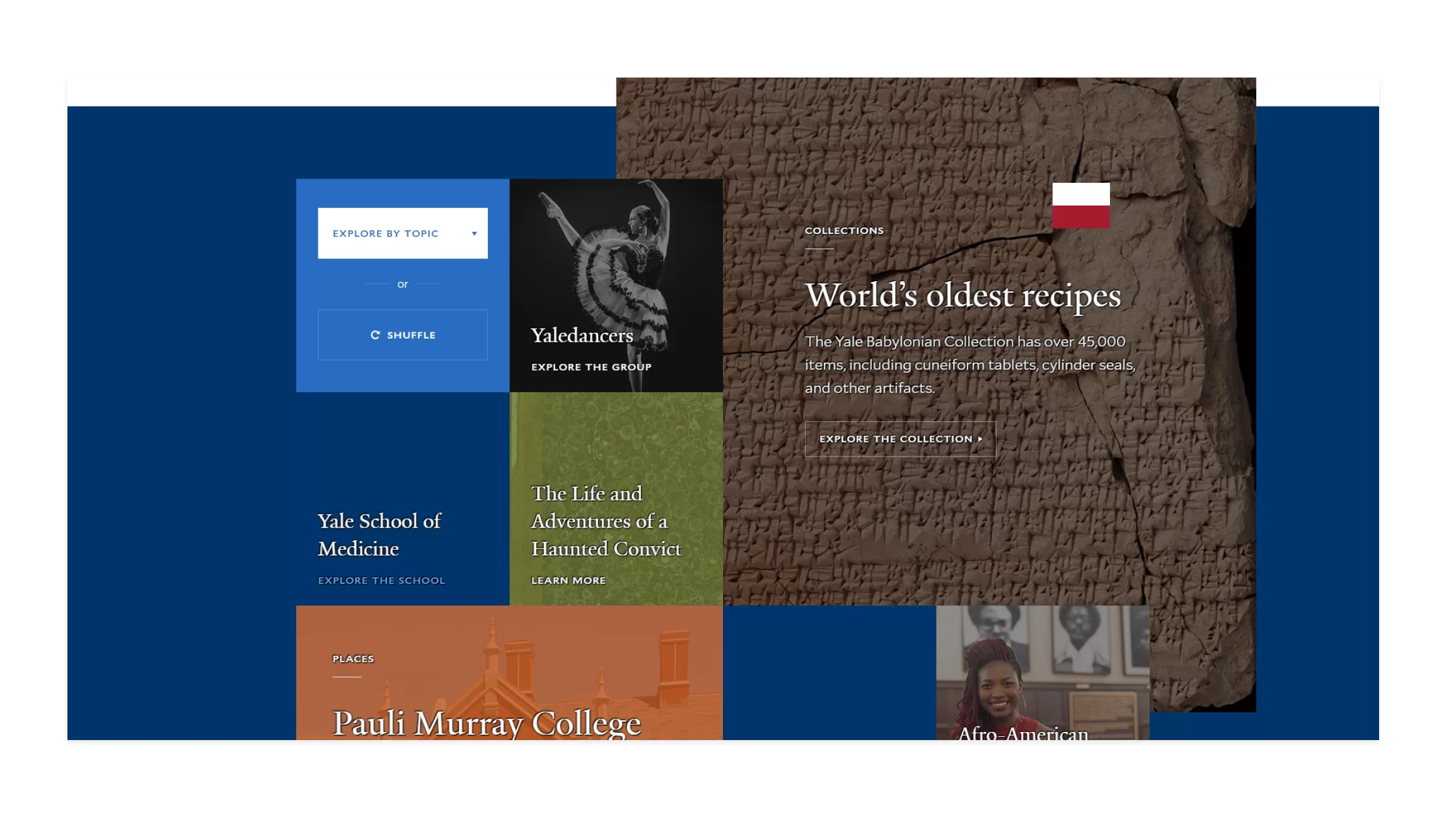
Bucknell University website
The website of Bucknell, a liberal arts university in the heart of Pennsylvania, has a bright video on its main page that introduces the institution’s scope. Website designers and developers provided us with a good education website example that would successfully pass a detailed website audit: modern design, neat content representation and layout, a lot of free space, and defined headlines. The university is active on popular social media and does not hesitate to put focus on it—you know, young people check their smartphones every minute.
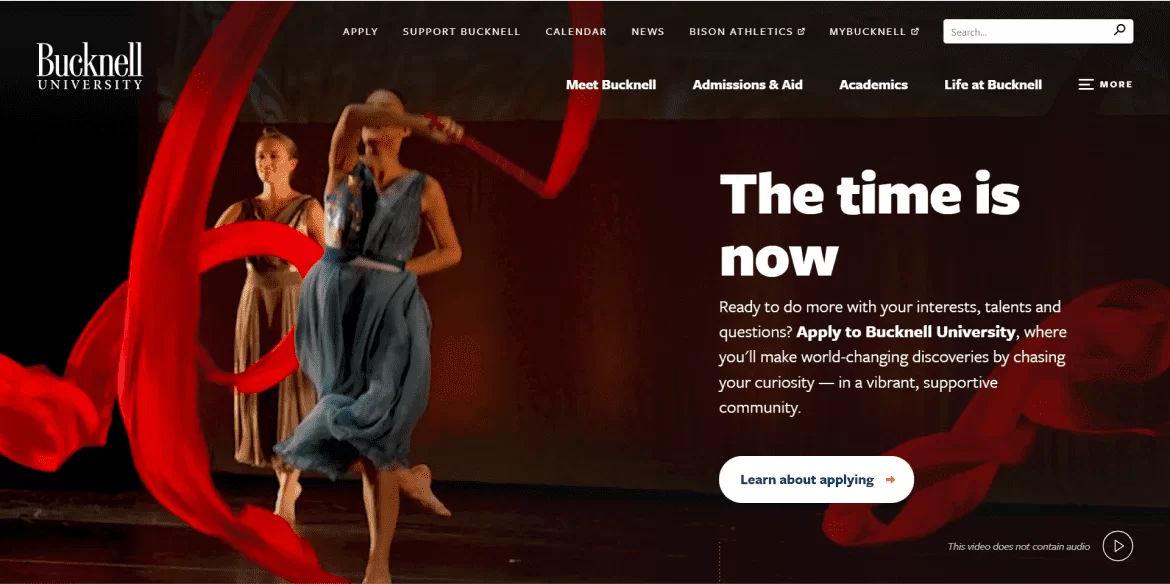

University of Texas at Austin website
The best motivation for a committed and educated young person is participation in world-changing activities, isn’t it? The website opens with a showreel and a motto: What starts here changes the world. Right below is the news about a computer model created by the University: it helped understand how coral reefs adapt to global warming. Site sections that follow solidify the impression of the importance of the university to the world in general and Texas in particular, i.e. rating placements, description of science programs, statistics, partnerships, etc.
The main CTA leads to a subdomain covering every aspect of the admission process.
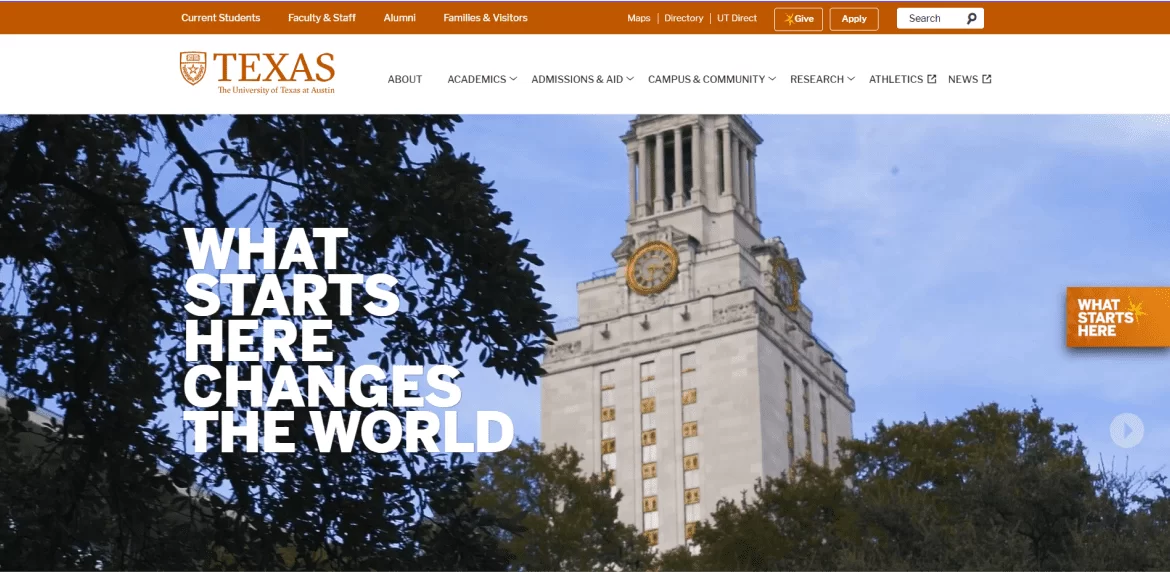
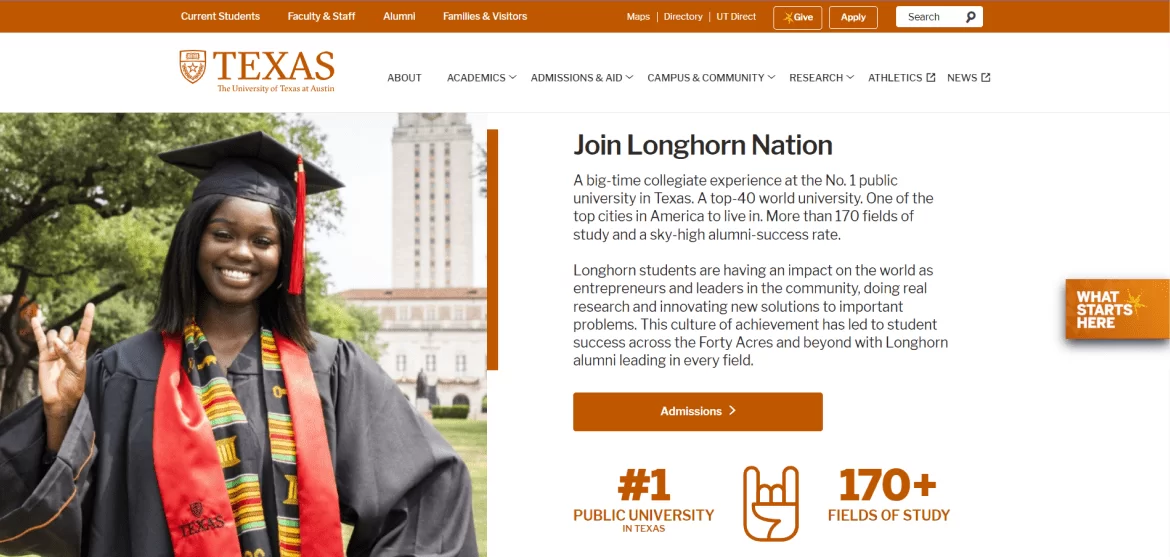
Brown University website
It is one of the most prestigious American universities that was the alma mater of a Nobel laureate and founders of the Fortune 500.
This higher ed website looks fresh and clean. The University’s website designers are pretty good at UX and layout design. Under the For You drop-down menu, they have collected links that are usually scattered over the profile header: sections for students, employees, graduates, parents, and friends.
Also, we see an elegant solution to break the news into two sections—Featured and Most Recent— and watch previews of news without leaving the homepage. The same trick was applied to the Find your way around Brown entry section. Together with the balanced content distribution, it gives the most pleasant user experience.
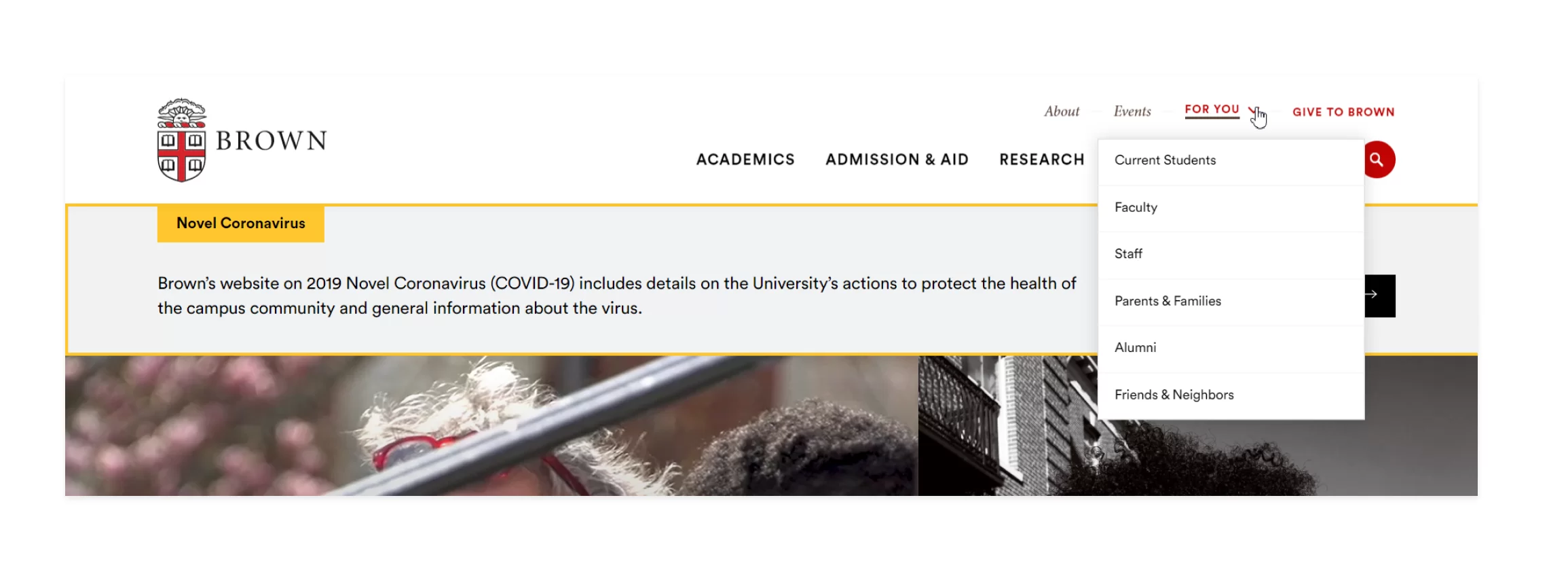
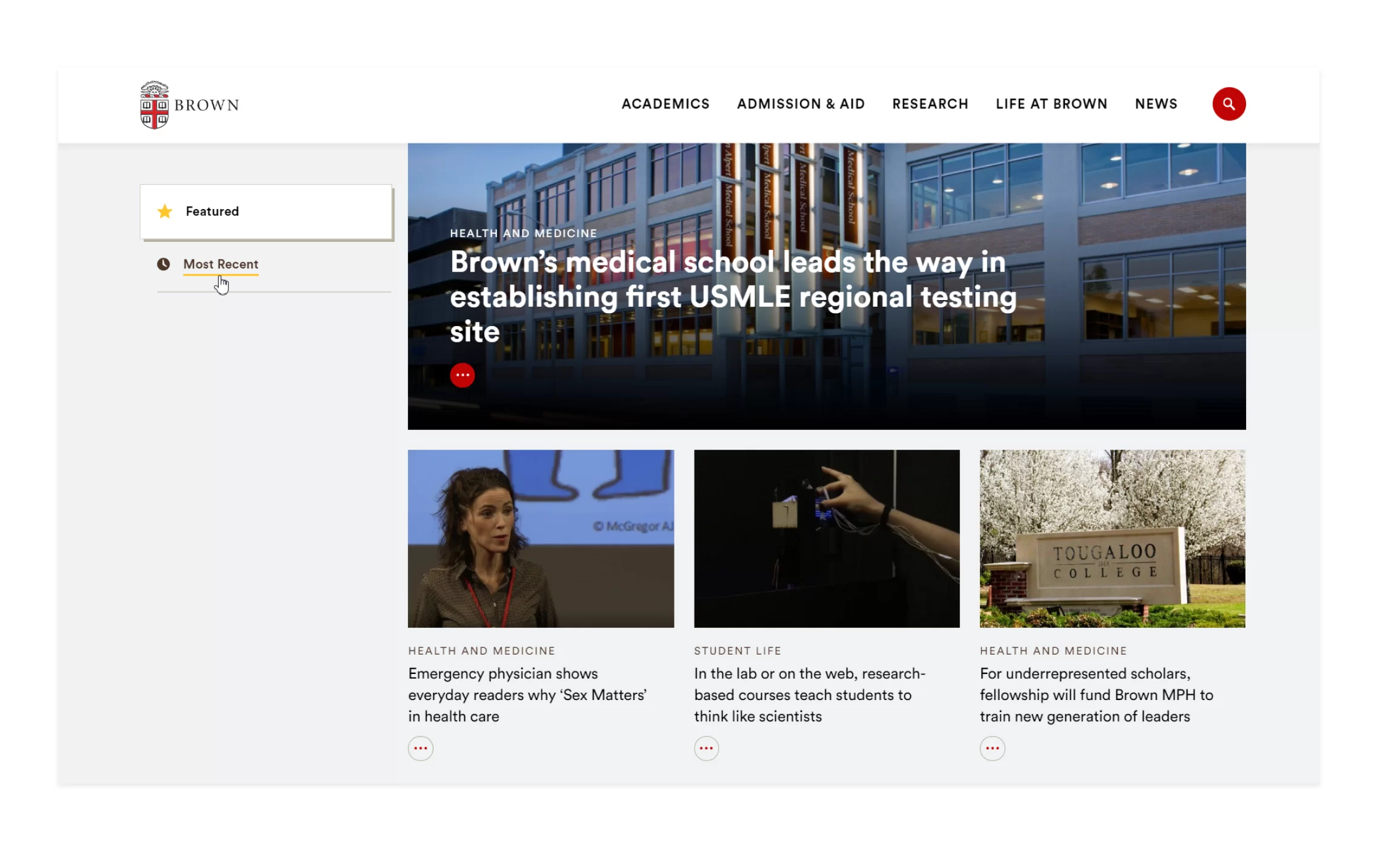
Middlebury College website
The university named after the Middlebury city, Vermont, has had the status of one of the most prestigious humanities universities in the United States for more than two centuries.
The main focus of this website's design is its creative navigation. The main page has the two classic menus above and below the hero image, but the next three site sections are interconnected with a bee-line of links. So original, we love it! It is an effective way to retain and engage users.
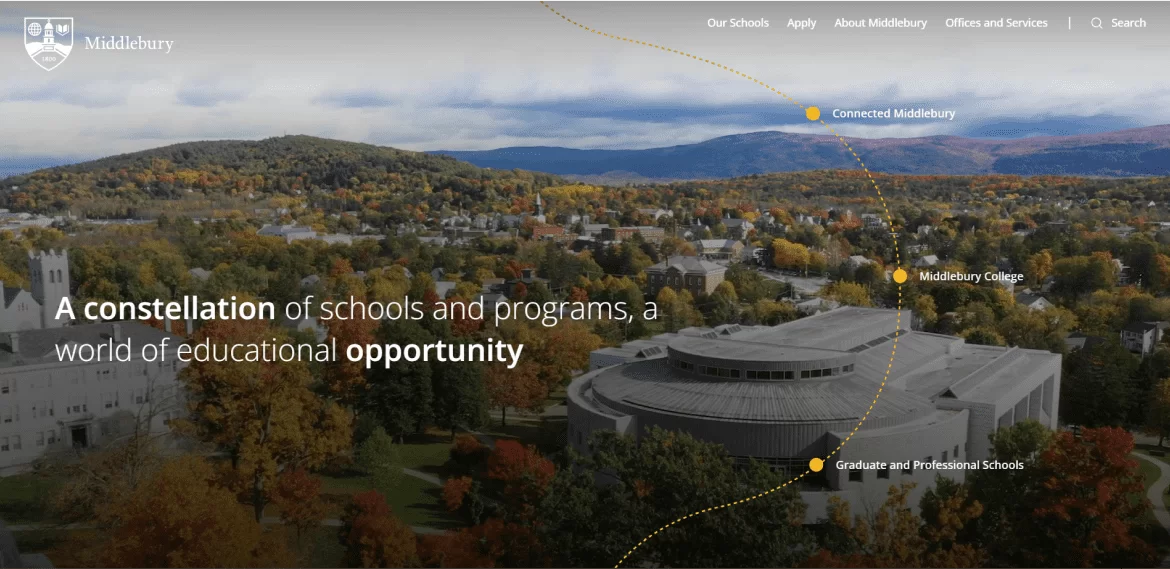
George Washington University website
A large and bright showreel greets visitors and narrates about the learning process and culture of the University that welcomes people of all nations and religions. The main page has clearly set-out CTAs: FIND A PROGRAM, VISIT, APPLY. It is easy to find what you need. We bet the conversion of this page is great.
The University also counts on the power of authenticity and social media. The home page sports a large section with photos from its accounts.
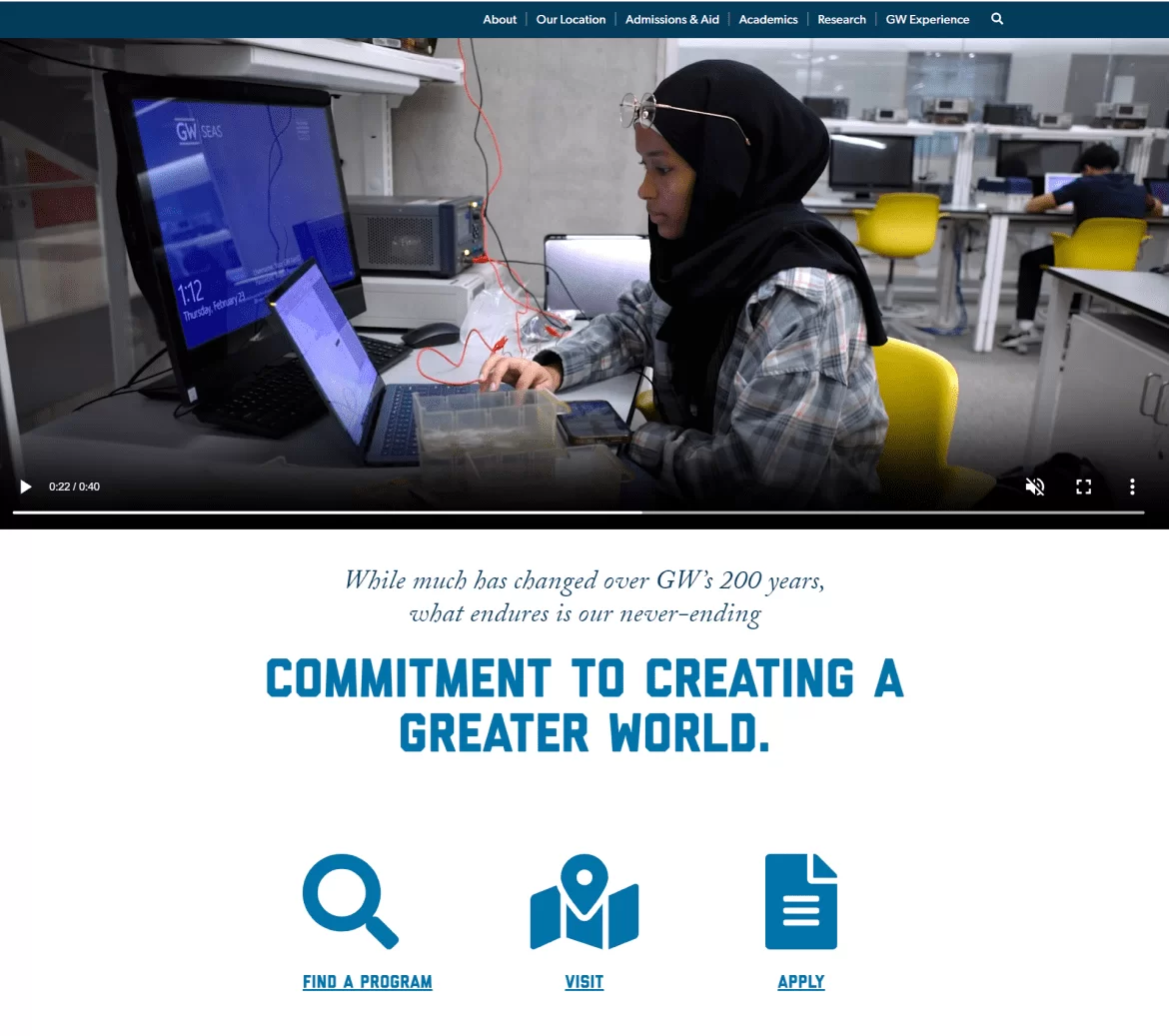
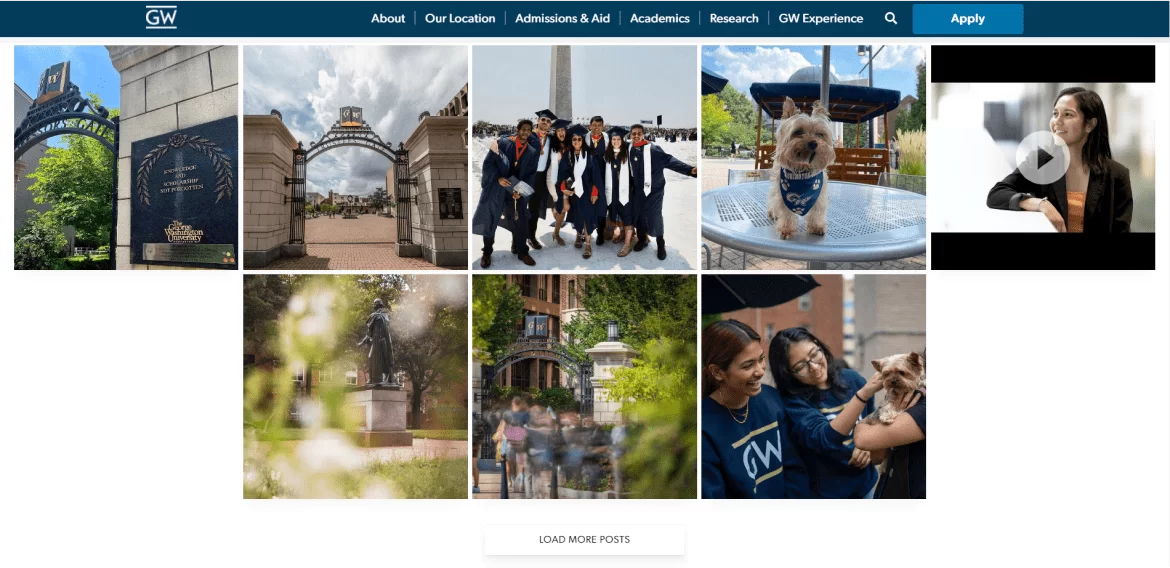
University of Nebraska-Lincoln website
The university is famous for being a place where the foundation of theoretical ecology has been laid.
Here we have another nicely done resource for students. Its landmark bright red is everpresent in the website layout, which makes it stand out among the minimalistic Drupal examples we have provided. All the sections of the top menu drop down simultaneously. The navigation panel below the main image has convenient icons. The University's website features the right number of CTAs and a section that not many higher ed websites use: graduates' reviews.
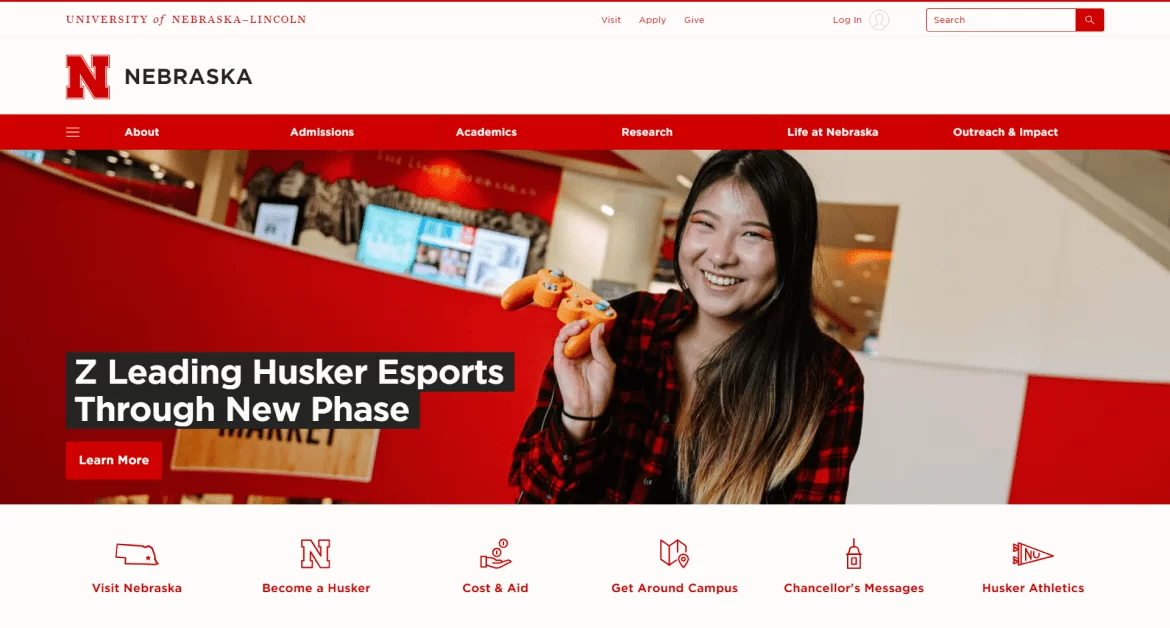
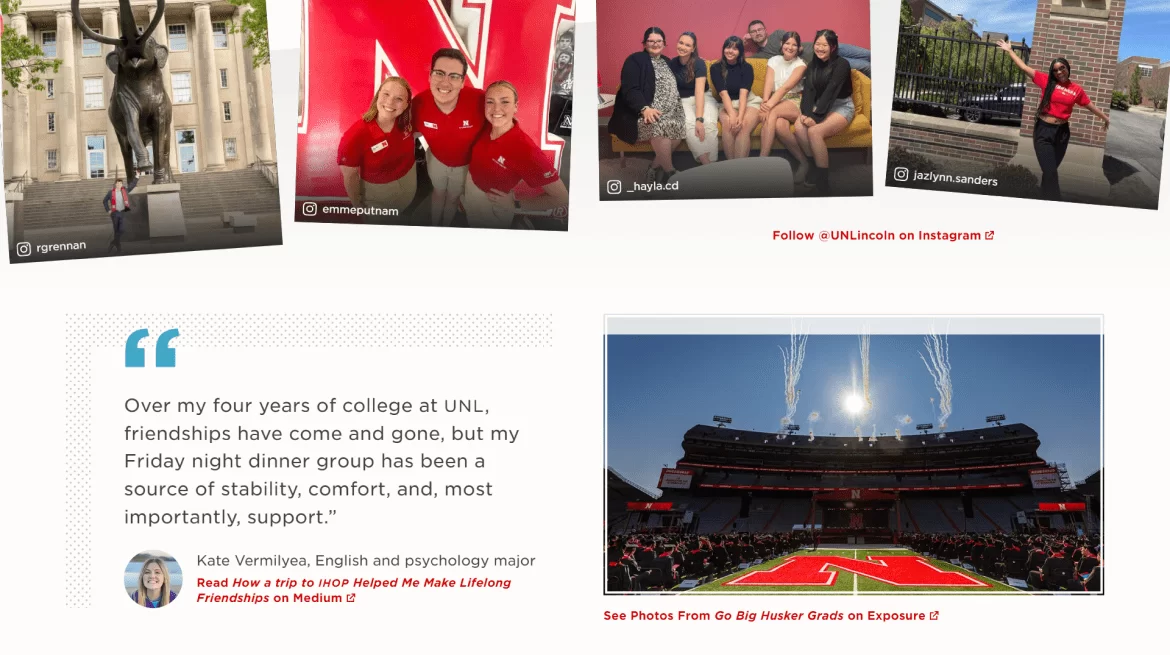
Oberlin College & Conservatory website
The world has to thank Oberlin College for a plethora of writers, comic creators, musicians, directors, screenwriters, and especially for Lena Dunham.
This higher education website is a specimen of moderation, compactness, and ease of navigation. It has a hamburger menu with several nesting levels, where we see all the standard sections about the institution, educational path, teachers, admission procedures, etc. The texts accompanying the sections are concise. But the site might lack a few more CTAs.
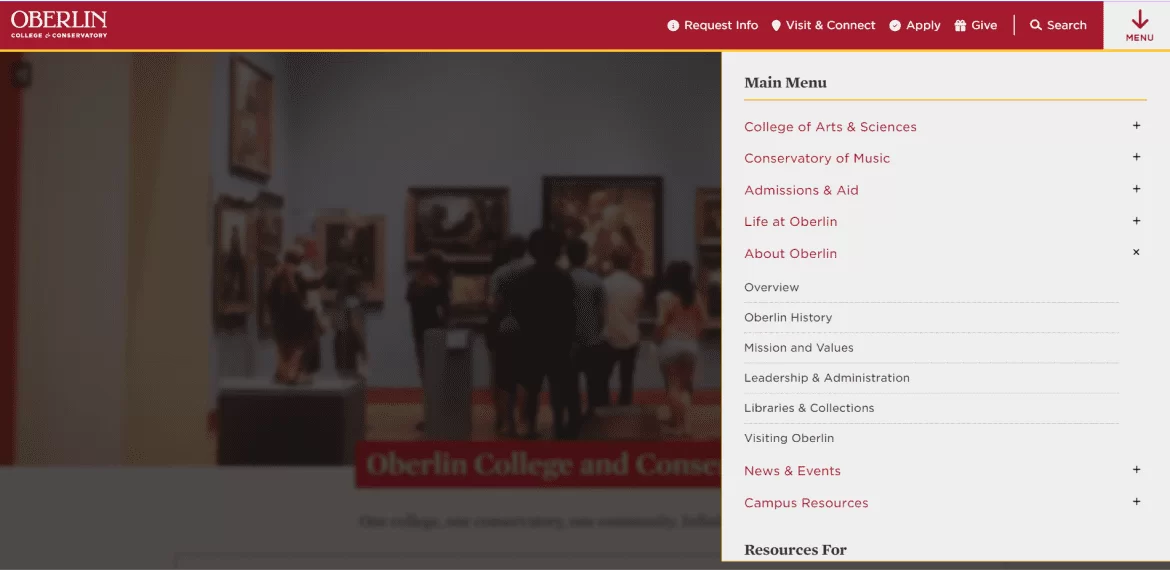
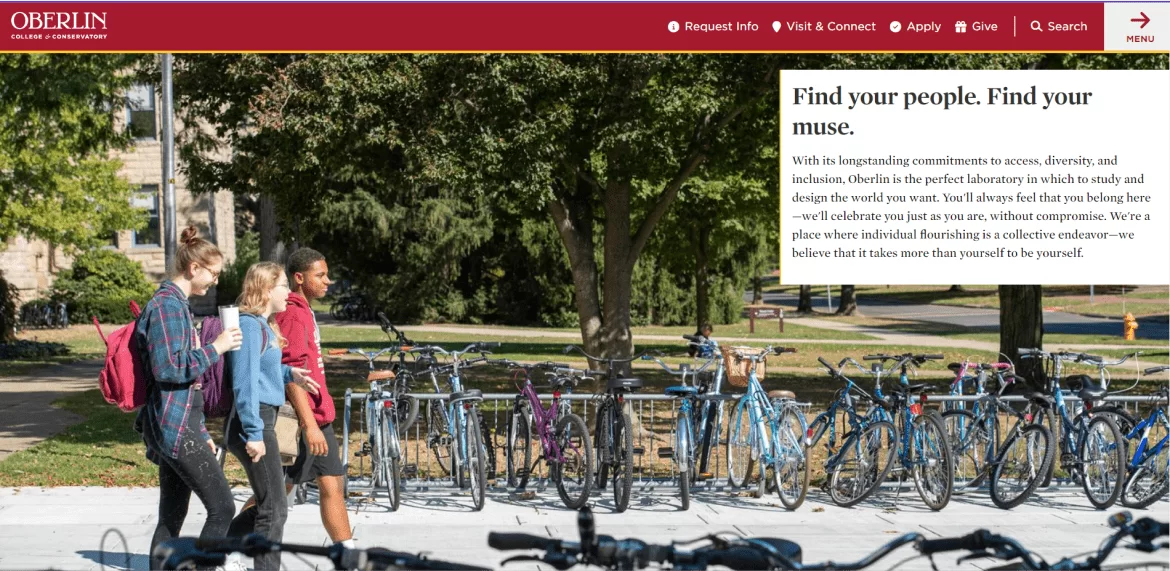
Conclusion
We hope our Drupal site examples could persuade you that higher education web design should not necessarily be dull or look like monotonous sheets of text in small print! Today every website, no matter its sphere, should be able to grab users' attention and change their minds.
Research of the sites showed that some of them still work on Drupal 7 or 8. If you are looking for someone to migrate your website to Drupal 9 or 10, email us at hello@adcillc.com.
LEARN MORE: Six use cases that highlight the benefits of the Bibliography & Citation project




